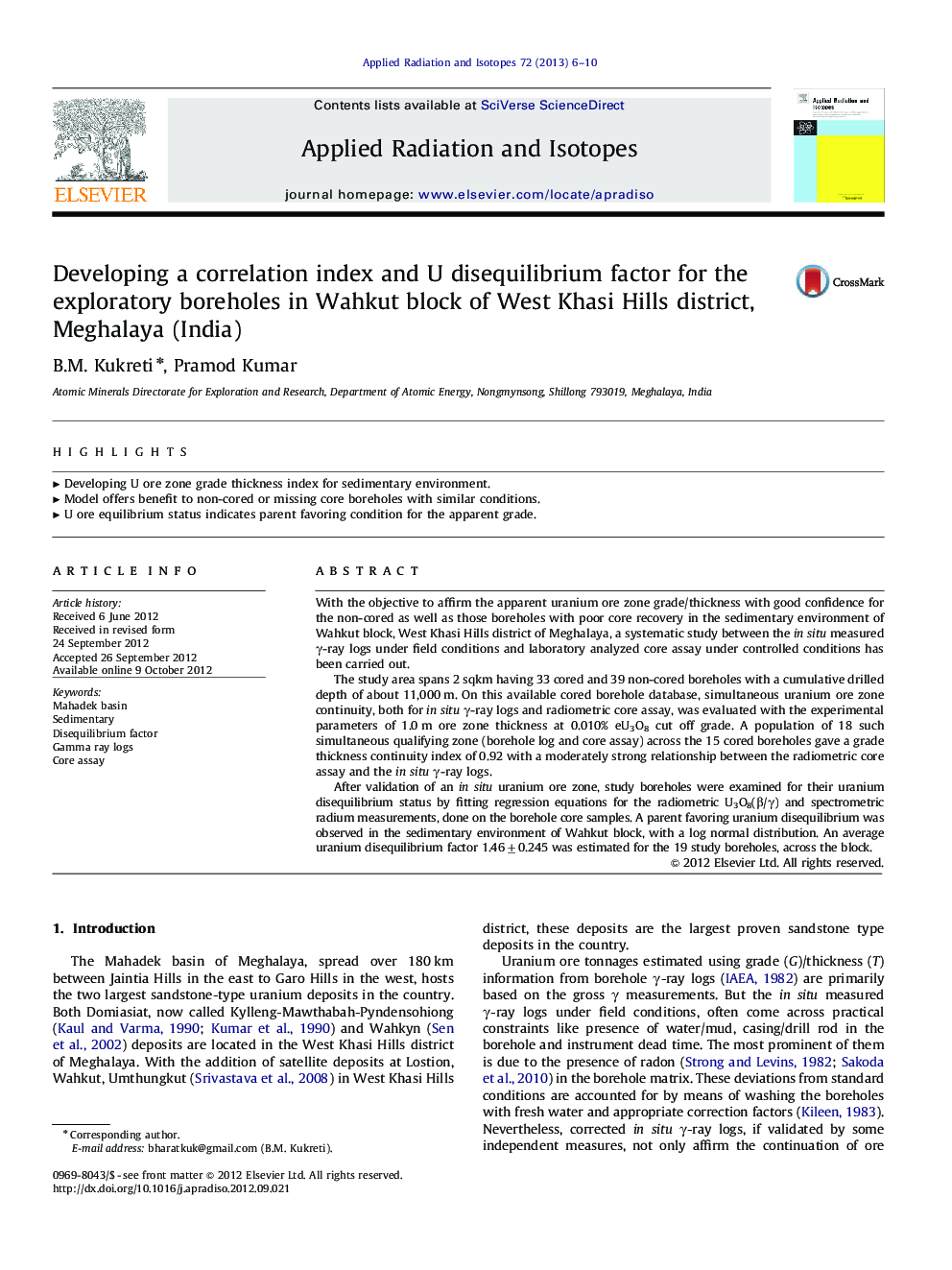| Article ID | Journal | Published Year | Pages | File Type |
|---|---|---|---|---|
| 1876221 | Applied Radiation and Isotopes | 2013 | 5 Pages |
With the objective to affirm the apparent uranium ore zone grade/thickness with good confidence for the non-cored as well as those boreholes with poor core recovery in the sedimentary environment of Wahkut block, West Khasi Hills district of Meghalaya, a systematic study between the in situ measured γ-ray logs under field conditions and laboratory analyzed core assay under controlled conditions has been carried out.The study area spans 2 sqkm having 33 cored and 39 non-cored boreholes with a cumulative drilled depth of about 11,000 m. On this available cored borehole database, simultaneous uranium ore zone continuity, both for in situ γ-ray logs and radiometric core assay, was evaluated with the experimental parameters of 1.0 m ore zone thickness at 0.010% eU3O8 cut off grade. A population of 18 such simultaneous qualifying zone (borehole log and core assay) across the 15 cored boreholes gave a grade thickness continuity index of 0.92 with a moderately strong relationship between the radiometric core assay and the in situ γ-ray logs.After validation of an in situ uranium ore zone, study boreholes were examined for their uranium disequilibrium status by fitting regression equations for the radiometric U3O8(β/γ) and spectrometric radium measurements, done on the borehole core samples. A parent favoring uranium disequilibrium was observed in the sedimentary environment of Wahkut block, with a log normal distribution. An average uranium disequilibrium factor 1.46±0.245 was estimated for the 19 study boreholes, across the block.
► Developing U ore zone grade thickness index for sedimentary environment. ► Model offers benefit to non-cored or missing core boreholes with similar conditions. ► U ore equilibrium status indicates parent favoring condition for the apparent grade.
